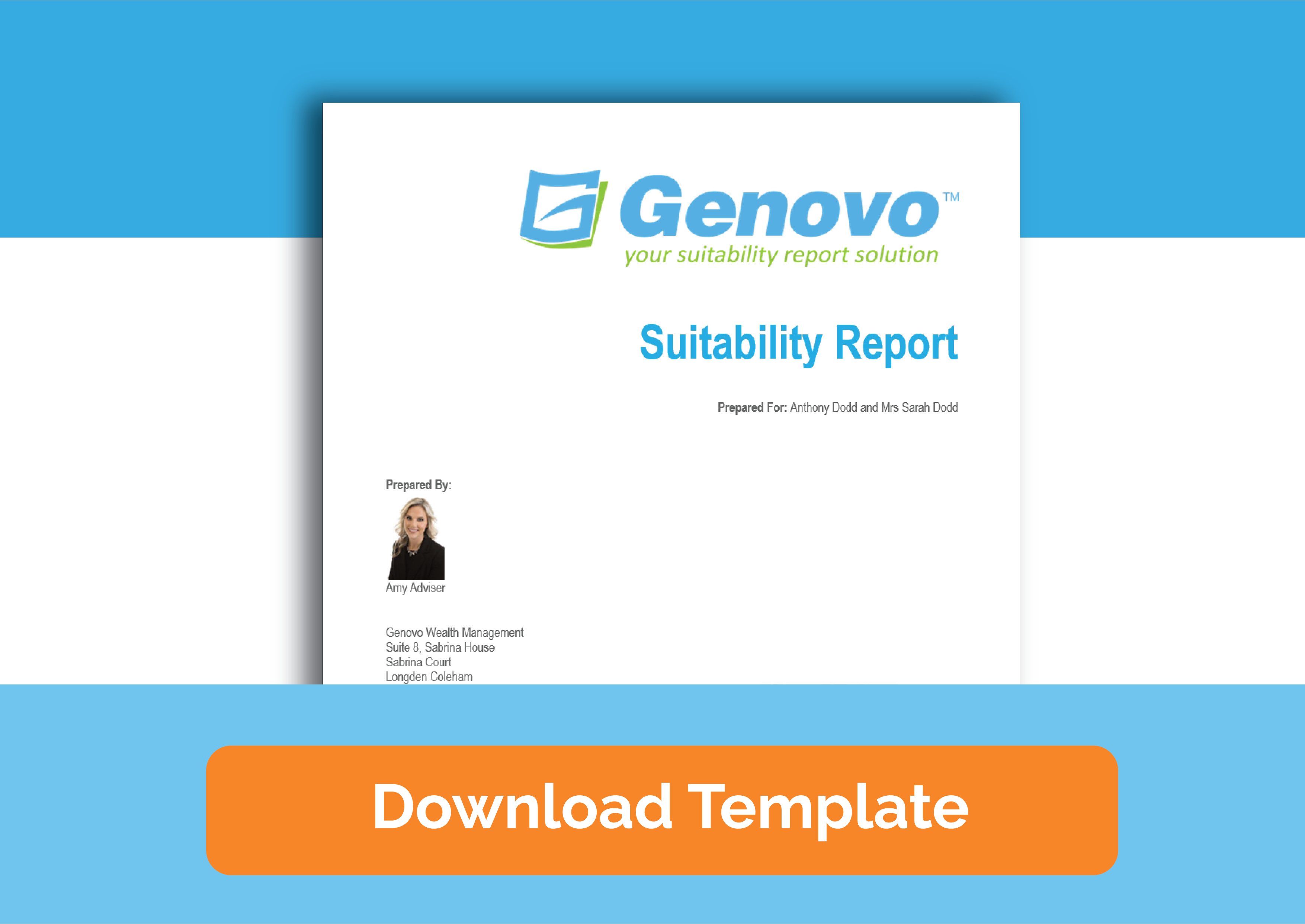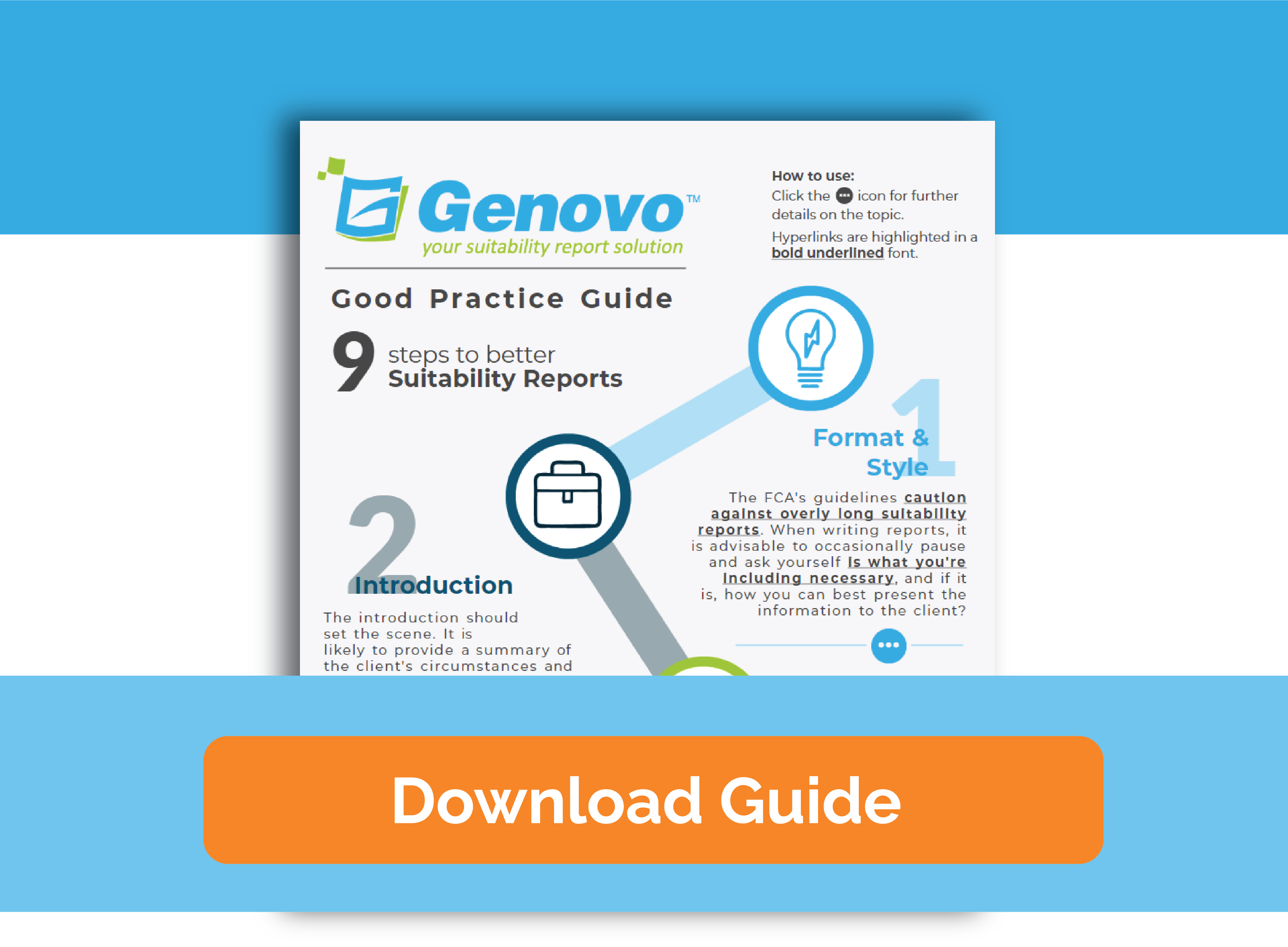
What does a good suitability report look like?
Mike Malkiewicz
In this month’s guest blog Mike Malkiewicz of Clear Paraplanning explores what a good suitability report should look like by sharing some hints and tips from his previous experiences. So over to you Mike…
The main service Clear Paraplanning provides is report writing. I have drafted quite a number of reports and I have had them checked by a wide spectrum of advisers, network file checkers and external compliance consultants and I believe that this provides me with some insight into what a good report should look like. However, apart from pure self-advertisement, my reason for writing this is in the hope of receiving interesting tips and stories of other people’s report writing experiences.
Active and passive report writing
Before I share some of my thoughts on reports with you, I would like to explain that I can (and do) carry out report writing in two very different ways which, for want of better terms you could call active and passive.
I call active report writing the process by which I liaise with the adviser firm and assist them in drawing up and maintaining their investment process, this is an holistic process which touches all aspects of the adviser firm’s advice process and culminates in the production of each individual client report.
My passive report writing service is a more conventional report production service where I prepare reports to my clients’ established in house standards and style producing a draft ready for checking by the adviser.
Common to both approaches is the fact that I take very little on face value which means that I will question advisers when I feel the need to do so. I also have a practised eye for detail which was honed over years in the civil service reading and checking legal documents. What follows is not meant to be a full blow by blow account of a client report but is my take on the everyday conundrums and decisions that advisers face when preparing such documents. I hope that it acts as a catalyst for thought and discussion.
Two report types
I view reports as being in two different categories. On the one hand, there is the comprehensive financial planning report which sets out the client’s high level goals and ambitions and turns these into SMART objectives from which the adviser’s recommendations flow. On the other hand, there is the suitability report which narrates the client’s objectives and shows how these can be met or adjusted.
I believe that both types of report should be brief and to the point and should avoid the use of financial gobbledegook and excessive technical detail. Crucially, both types of report must be written in a manner that is understandable to the client and recommend strategies and products that the client understands. That is why a thorough assessment of the client’s financial knowledge and experience is such a significant building block to financial planning.
For the record, I think it is a mistake to try and combine both types of report into one. A hybrid report almost always ends up as a very uninteresting document which is difficult for clients to fully digest and takes so long to produce that it is out of date before the ink dries.
SMART objectives
Only a fool or an adrenalin junkie takes on more risk than they need to and most clients are neither. It is all very well sitting a client in front of a risk questionnaire and having a brief chat with them afterwards regarding their “risk budget” or “capacity for loss” but, if risk and return in the context of their own objectives is not considered, there is a strong likelihood that the client will end up taking more risk than they require achieving their objectives. That is why clients’ aims or goals must be refined with them so that they become Specific, Measurable, Achievable, Realistic and Time scaled e.g. “A comfortable retirement” is distilled into “ You are targeting an initial income of £x in today’s terms from age 66”.
Objectives should never be confused with solutions, so “Mr A wishes to consolidate his 6 personal pensions for easier administration” is not an objective. You will know when a SMART objective is reached as you will find it relatively easy to hang a required growth rate and risk level onto it.
Client’s current situation
Having agreed SMART objectives with the client, the next stage of the advice process will be to consider the client’s current situation. I have seen many reports which slavishly set out every detail captured on the fact find as well as others which only give a brief “nod” to the fact find. As in many things, the middle path is best.
I firmly believe that the report should narrate the client’s current circumstances as they relate to the client’s objectives and the advice being provided. Therefore, it is unlikely to be significant that a client smokes if you are providing the client with investment accumulation advice. On the other hand, the client’s marital situation, age, earning prospects, tax situation, affordability and general health and longevity will have a bearing on the overall advice package and consequently should be included in the report. Why? Not for some backside-covering exercise, but because it gives the client an opportunity to check that you have accurately recorded his personal information and used it in a sensible way to provide a suitable recommendation.
Cost comparisons
Frequently, the adviser will need to review a client’s existing products and make a judgement on whether these remain suitable in view of the objectives and risk level agreed with the client. Those requiring change need to be compared on a cost basis – this fact is well publicised for pension switches, but less so for other replacements.Many large adviser firms and networks operate a “traffic light” system whereby additional costs of up to a lower limit are accepted subject to usual file checks, there is mid-range where pre-approval is required and then an upper limit where a much higher level of justification is needed before approval is given. This is a system which encourages a tick box compliance culture focusing everyone’s attention on cost and away from the real issue which is the value of the overall package that the client is being offered.
Nonetheless, it is important to fully and fairly represent the cost of any advice to the client. Some confusion centres around which costs to include in a cost comparison and which do not need to be. From the client’s perspective, it is really quite straightforward. The client needs to:
1) Know how much in total your recommendation is costing him.
2) See this compared to the costs he/she was already paying.
3) See that there is a tangible benefit in following your advice.
The FCA has endorsed showing the additional cost as a single number being the difference between either projected values or Reduction in Yield. In the name of transparency, I believe it is a good rule of thumb to include all adviser fees in product cost comparisons and you could set out two sets of RIY and Critical Yields showing the client the difference in the extra growth required from his investments to cover the cost of ongoing advice charges if they are added to his new product or if they are invoiced separately.
The effect on transfer and death benefits values of initial advice charges being deducted from the product should also be compared against these values where initial fees are invoiced instead.
As adviser charging has now been around for 3 years, it is time to think about how this will impact upon charging comparisons. To create a fair and accurate comparison, any ongoing adviser charges that apply to the ceding plan must be taken into account. Whilst providers will disclose product and fund charges (albeit sometimes reluctantly), they will not disclose ongoing adviser charges and this is a matter that must be raised with the client in order that you are sure that you have all relevant information to compare.
Remember too that it is not just new products where cost comparison is necessary. As advisers, you are perfectly entitled to charge extra for servicing an older style contract which continues to meet the client’s needs, but involves more of your time to service properly. So, it is relevant to compare the client’s existing product and fund charge along with your additional charge and you might go so far as to have a spreadsheet for the client file comparing all possible alternatives as part of your decision-making process.
Time for a bit of a rant
When requesting information about existing products (pensions in particular), I have noticed that providers have become more difficult to deal with in a number of ways: –
- Ignoring the information request and issuing “standard information” instead.
- Not responding to information requests until chased.
- Providing inaccurate information.
- Acknowledging with a timescale which is not adhered to.
Personally, I should like to see a universally agreed information pack for each type of pension with a standard turnaround time to produce it. I appreciate that not all information is required all of the time but it must be quicker (and therefore cheaper) for a provider to produce a standardised document to a known timescale. At the end of the day, the provider must be compelled to provide a useful level of information within a reasonable time period. After all, the information is being requested in order to comply with Financial Services Conduct of Business Rules as well as in the spirit of Treating Customers Fairly. Or do we all just sit and wait for the Pension Dashboard?
Benefits and performance
To return to the original thread, each existing product should be reviewed not just on cost and performance but in relation to the individual benefits that each contract brings. This can be a variety of things but most common are enhanced life insurance in investment bonds or pensions, enhanced tax free cash in pensions, terminal bonuses, and guarantees of one sort or another. As well as listing these, the report should set out their ongoing relevance to the client being able to achieve their objectives, will they help or hinder, accelerate or delay?
Where poor performance is a reason for replacing a contract or fund, I would advise tracking the performance against the appropriate sector performance and demonstrating underperformance over a sustained period of time, the use of a table or graph will assist in presentation.
If part of the review involves making a change that has tax consequences, I would set this out under a heading like Disadvantages and Tax Implications and place a full description of the tax in the appendix. Thus:-
The switch of funds within your Cofunds investment will give rise to a capital gain of £1,000. Even though there will be no Capital Gains Tax to pay because the gain falls within your annual Capital Gains Tax allowance, it is worth bearing in mind that this disposal will reduce the Capital Gains Tax allowance you have available to offset against gains realised on any other asset disposals that arise during the current tax year.
Would be placed in the body of the report with a full description of Capital Gains Tax in the appendix.
Sleuthing
We are all faced with policies from providers who no longer exist from time to time and whilst I used to pride myself on an almost encyclopaedic knowledge of who took over whom, the list nowadays is simply too large (or am I getting old?) and I would recommend https://www.abi.org.uk/data-and-resources/tools-and-resources/register-of-consolidations/ if you do not already know about it.
Recommendation(s)
Once the stage has been set using the client’s objectives, current situation and current products, you must set out the recommendations that will get him/her from where he is today to where he wants to be tomorrow.
I favour the idea of providing an executive summary of recommendations at the beginning of the report so that they are all on one page if the client needs to refer to them quickly or appraise them as a whole.
I think that defining the tax wrappers being recommended is important but should not detract from the immediacy of the recommendation and therefore the appendix is the place for definitions of that type. The recommendations section should emphasise the “why?” rather than the “what?”.
I am not in favour of long winded explanations of why a particular product provider has been selected as they are more than capable of blowing their own trumpets. However a short description of the provider’s history is frequently of interest to the client. Obviously, the client file is the place for the full audit trail concerning product and provider selection. A short explanation of the means of selection is in my opinion, sufficient in the report.
Again, I advocate the use of a “Disadvantages and Tax Implications” sub-section in this part of the report to cover such matters as:-
Discretionary portfolios are segregated, in other words they are portfolios of individual holdings. If a sale is made, the profit or loss made immediately contributes to that tax year’s allowance. If the allowance is exceeded, capital gains tax needs to be paid. Sales of individual securities within these portfolios may give rise to CGT liabilities.
As well as the more commonplace (but increasingly rare) exit penalties, IHT warnings etc.
Despite what Rory Percival is quoted to have said on the subject, I would always provide the client an explanation of what was considered but ultimately rejected because, reportedly at least, the overwhelming first-hand experience of FCA file checks still points towards criticism or fails due to non-discussion of options. More importantly I think, it is more transparent to take the client through the journey you have undertaken to reach the point of advice – briefly.
Investment strategy
I find it convenient to devote a separate section to this from the recommendation as I always view this as the “engine room” of the entire process of getting the client from A to B. There are frequent occasions where more than one strategy is called for and so this section can become quite lengthy in its own right without discussion around providers and products.
This section of the report usually commences by stating the client’s attitude(s) towards risk, capacity(ies) for loss and how these tie in with the client’s objectives. Each investment strategy is named and populated with the investments selected to make it work as agreed.
In the case of portfolios of funds managed by advisers I would tend towards brevity, simply naming each fund and its allocation as part of the portfolio. Most advisers I know who manage their own portfolios use FE Analytics from which more or less detailed portfolio reports can be produced as thought relevant and these can be enclosed with the report along with the relevant compliance documentation for each fund. I understand that O&M Systems also has the functionality required to run advisory portfolios but am unfamiliar with it. Most clients are less than interested in the way in which portfolios are managed but many advisers take great pains to place in the report as much as they can about the process which is their pride and joy!
Investment philosophy
Many advisers now also outsource their investment management and more than enough is written and continues to be written on this subject but I think it is important that clients are given a real understanding about how their investment is managed. I think it would be a good idea if clients were provided at their first meeting with the adviser, a copy of the adviser’s Investment Philosophy. An Investment Philosophy is a statement of the adviser’s beliefs with regard to how investments should be managed, their take on Modern Portfolio Theory, active/passive management, SRI, or maybe that investment management is an entirely separate discipline and any other high level issues that the adviser sees as important and give his service a particular flavour or tilt.
Conclusion
Most reports end with the usual risk warnings which I shall not deal with other than to say they should be relevant to the report. I think there are two important issues to cover at the end of any report:
1) What is not covered
2) What to do next.
Finally, although this article has been all about reports, it should be remembered that the client file must support everything that is written in the report. I hope that my comments have been helpful or at least thought provoking.
If you’ve anything to add to the points that Mike’s raised please leave a comment below.
To learn more about the services that Mike can provide check out the Clear Paraplanning website.
If you’d like to feature as a guest blogger on the Genovo website please get in touch.
Image courtesy of bplanet / FreeDigitalPhotos.net

